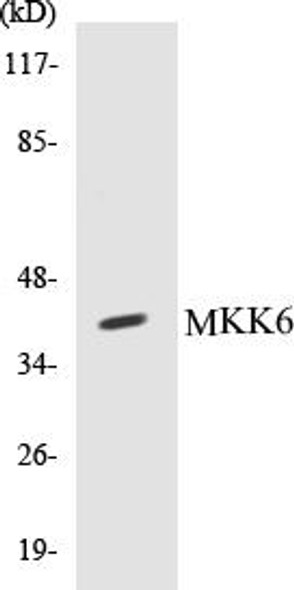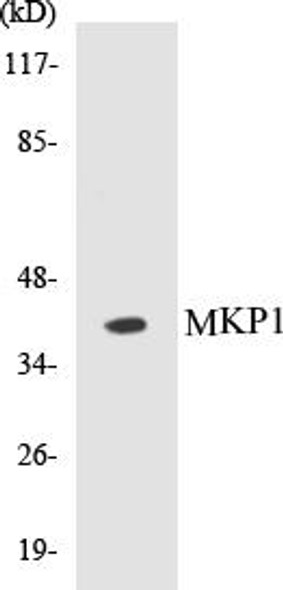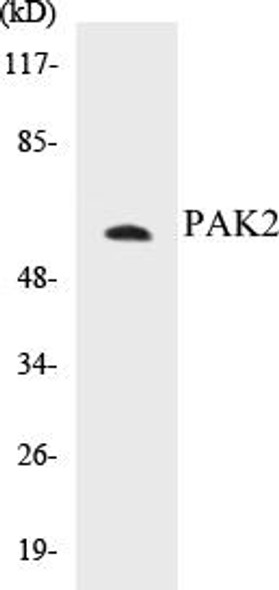Description
TRXR2 Colorimetric Cell-Based ELISA Kit
The TRXR2 Colorimetric Cell-Based ELISA Kit is a highly sensitive and specific assay designed for the accurate detection of Thioredoxin Reductase 2 (TRXR2) levels in cell lysates and tissue extracts. This kit provides reliable and reproducible results, making it an ideal tool for studying the role of TRXR2 in oxidative stress, redox signaling, and various diseases.Thioredoxin Reductase 2 is an important enzyme that plays a key role in maintaining cellular redox homeostasis by regulating the antioxidant defense system. Dysfunction of TRXR2 has been implicated in a wide range of pathological conditions, including cancer, neurodegenerative diseases, and cardiovascular disorders.
By measuring TRXR2 levels, researchers can gain insights into the mechanisms underlying these diseases and potentially identify new therapeutic targets.Overall, the TRXR2 Colorimetric Cell-Based ELISA Kit offers a valuable tool for researchers interested in studying the role of TRXR2 in health and disease, with its high sensitivity and specificity ensuring accurate and meaningful results.
| Product Name: | TRXR2 Colorimetric Cell-Based ELISA |
| Product Code: | CBCAB00370 |
| ELISA Type: | Cell-Based |
| Target: | TRXR2 |
| Reactivity: | Human, Mouse, Rat |
| Dynamic Range: | > 5000 Cells |
| Detection Method: | Colorimetric 450 nmStorage/Stability:4°C/6 Months |
| Format: | 96-Well Microplate |
The TRXR2 Colorimetric Cell-Based ELISA Kit is a convenient, lysate-free, high throughput and sensitive assay kit that can detect TRXR2 protein expression profile in cells. The kit can be used for measuring the relative amounts of TRXR2 in cultured cells as well as screening for the effects that various treatments, inhibitors (ie siRNA or chemicals), or activators have on TRXR2.
Qualitative determination of TRXR2 concentration is achieved by an indirect ELISA format. In essence, TRXR2 is captured by TRXR2-specific primary antibodies while the HRP-conjugated secondary antibodies bind the Fc region of the primary antibody. Through this binding, the HRP enzyme conjugated to the secondary antibody can catalyze a colorimetric reaction upon substrate addition. Due to the qualitative nature of the Cell-Based ELISA, multiple normalization methods are needed:
| 1. | A monoclonal antibody specific for human GAPDH is included to serve as an internal positive control in normalizing the target absorbance values. |
| 2. | Following the colorimetric measurement of HRP activity via substrate addition, the Crystal Violet whole-cell staining method may be used to determine cell density. After staining, the results can be analysed by normalizing the absorbance values to cell amounts, by which the plating difference can be adjusted. |
| Database Information: | Gene ID: 10587, UniProt ID: Q9NNW7, OMIM: 606448, Unigene: Hs.443430 |
| Gene Symbol: | TXNRD2 |
| Sub Type: | None |
| UniProt Protein Function: | TXNRD2: Maintains thioredoxin in a reduced state. Implicated in the defenses against oxidative stress. May play a role in redox- regulated cell signaling. Belongs to the class-I pyridine nucleotide-disulfide oxidoreductase family. 4 isoforms of the human protein are produced by alternative splicing. |
| UniProt Protein Details: | Protein type:Nuclear receptor co-regulator; Nucleotide Metabolism - pyrimidine; EC 1.8.1.9; Oxidoreductase Chromosomal Location of Human Ortholog: 22q11.21 Cellular Component: mitochondrial matrix; mitochondrion Molecular Function:FAD binding; protein binding; thioredoxin-disulfide reductase activity Biological Process: cell redox homeostasis; response to oxygen radical; response to reactive oxygen species |
| NCBI Summary: | This gene encodes a member of the class I pyridine nucleotide-disulfide oxidoreductase family. The encoded protein is a selenocysteine-containing flavoenzyme that maintains thioredoxins in a reduced state, thereby playing a key role in regulating the cellular redox environment. Mammals have three related thioredoxin reductases. This gene encodes a mitochondrial form important for scavenging of reactive oxygen species in mitochondria. Alternatively spliced transcript variants encoding different isoforms have been described. [provided by RefSeq, Sep 2013] |
| UniProt Code: | Q9NNW7 |
| NCBI GenInfo Identifier: | 182705230 |
| NCBI Gene ID: | 10587 |
| NCBI Accession: | Q9NNW7.3 |
| UniProt Secondary Accession: | Q9NNW7,O95840, Q96IJ2, Q9H2Z5, Q9NZV3, Q9NZV4, Q9P2Y0 Q9P2Y1, Q9UQU8, |
| UniProt Related Accession: | Q9NNW7 |
| Molecular Weight: | 30,291 Da |
| NCBI Full Name: | Thioredoxin reductase 2, mitochondrial |
| NCBI Synonym Full Names: | thioredoxin reductase 2 |
| NCBI Official Symbol: | TXNRD2 |
| NCBI Official Synonym Symbols: | TR; TR3; SELZ; TRXR2; TR-BETA |
| NCBI Protein Information: | thioredoxin reductase 2, mitochondrial |
| UniProt Protein Name: | Thioredoxin reductase 2, mitochondrial |
| UniProt Synonym Protein Names: | Selenoprotein Z; SelZ; TR-beta; Thioredoxin reductase TR3 |
| Protein Family: | Thioredoxin reductase |
| UniProt Gene Name: | TXNRD2 |
| UniProt Entry Name: | TRXR2_HUMAN |
| Component | Quantity |
| 96-Well Cell Culture Clear-Bottom Microplate | 2 plates |
| 10X TBS | 24 mL |
| Quenching Buffer | 24 mL |
| Blocking Buffer | 50 mL |
| 15X Wash Buffer | 50 mL |
| Primary Antibody Diluent | 12 mL |
| 100x Anti-Phospho Target Antibody | 60 µL |
| 100x Anti-Target Antibody | 60 µL |
| Anti-GAPDH Antibody | 60 µL |
| HRP-Conjugated Anti-Rabbit IgG Antibody | 12 mL |
| HRP-Conjugated Anti-Mouse IgG Antibody | 12 mL |
| SDS Solution | 12 mL |
| Stop Solution | 24 mL |
| Ready-to-Use Substrate | 12 mL |
| Crystal Violet Solution | 12 mL |
| Adhesive Plate Seals | 2 seals |
The following materials and/or equipment are NOT provided in this kit but are necessary to successfully conduct the experiment:
- Microplate reader able to measure absorbance at 450 nm and/or 595 nm for Crystal Violet Cell Staining (Optional)
- Micropipettes with capability of measuring volumes ranging from 1 µL to 1 ml
- 37% formaldehyde (Sigma Cat# F-8775) or formaldehyde from other sources
- Squirt bottle, manifold dispenser, multichannel pipette reservoir or automated microplate washer
- Graph paper or computer software capable of generating or displaying logarithmic functions
- Absorbent papers or vacuum aspirator
- Test tubes or microfuge tubes capable of storing ≥1 ml
- Poly-L-Lysine (Sigma Cat# P4832 for suspension cells)
- Orbital shaker (optional)
- Deionized or sterile water
*Note: Protocols are specific to each batch/lot. For the correct instructions please follow the protocol included in your kit.
| Step | Procedure |
| 1. | Seed 200 µL of 20,000 adherent cells in culture medium in each well of a 96-well plate. The plates included in the kit are sterile and treated for cell culture. For suspension cells and loosely attached cells, coat the plates with 100 µL of 10 µg/ml Poly-L-Lysine (not included) to each well of a 96-well plate for 30 minutes at 37°C prior to adding cells. |
| 2. | Incubate the cells for overnight at 37°C, 5% CO2. |
| 3. | Treat the cells as desired. |
| 4. | Remove the cell culture medium and rinse with 200 µL of 1x TBS, twice. |
| 5. | Fix the cells by incubating with 100 µL of Fixing Solution for 20 minutes at room temperature. The 4% formaldehyde is used for adherent cells and 8% formaldehyde is used for suspension cells and loosely attached cells. |
| 6. | Remove the Fixing Solution and wash the plate 3 times with 200 µL 1x Wash Buffer for five minutes each time with gentle shaking on the orbital shaker. The plate can be stored at 4°C for a week. |
| 7. | Add 100 µL of Quenching Buffer and incubate for 20 minutes at room temperature. |
| 8. | Wash the plate 3 times with 1x Wash Buffer for 5 minutes each time. |
| 9. | Add 200 µL of Blocking Buffer and incubate for 1 hour at room temperature. |
| 10. | Wash 3 times with 200 µL of 1x Wash Buffer for 5 minutes each time. |
| 11. | Add 50 µL of 1x primary antibodies (Anti-TRXR2 Antibody and/or Anti-GAPDH Antibody) to the corresponding wells, cover with Parafilm and incubate for 16 hours (overnight) at 4°C. If the target expression is known to be high, incubate for 2 hours at room temperature. |
| 12. | Wash 3 times with 200 µL of 1x Wash Buffer for 5 minutes each time. |
| 13. | Add 50 µL of 1x secondary antibodies (HRP-Conjugated AntiRabbit IgG Antibody or HRP-Conjugated Anti-Mouse IgG Antibody) to corresponding wells and incubate for 1.5 hours at room temperature. |
| 14. | Wash 3 times with 200 µL of 1x Wash Buffer for 5 minutes each time. |
| 15. | Add 50 µL of Ready-to-Use Substrate to each well and incubate for 30 minutes at room temperature in the dark. |
| 16. | Add 50 µL of Stop Solution to each well and read OD at 450 nm immediately using the microplate reader. |
(Additional Crystal Violet staining may be performed if desired – details of this may be found in the kit technical manual.)






